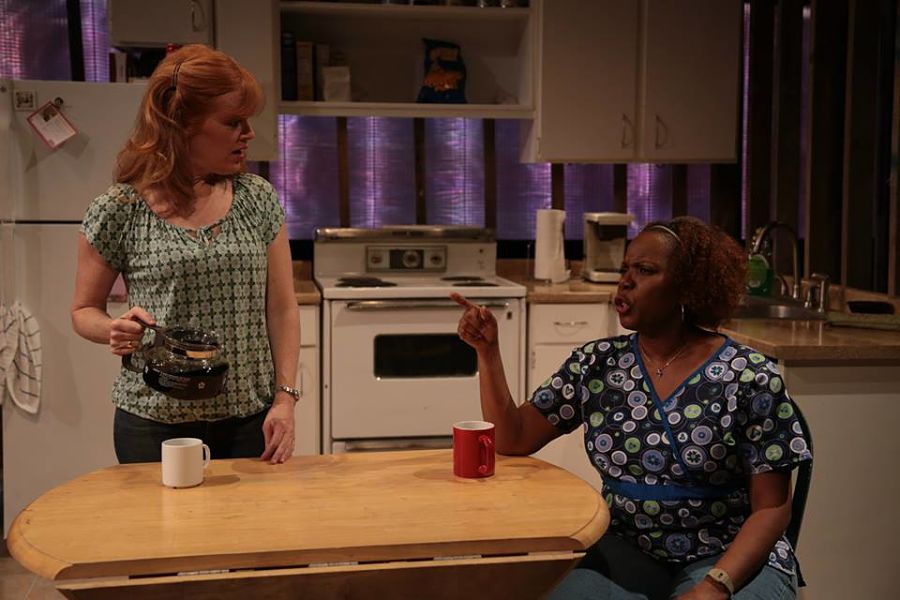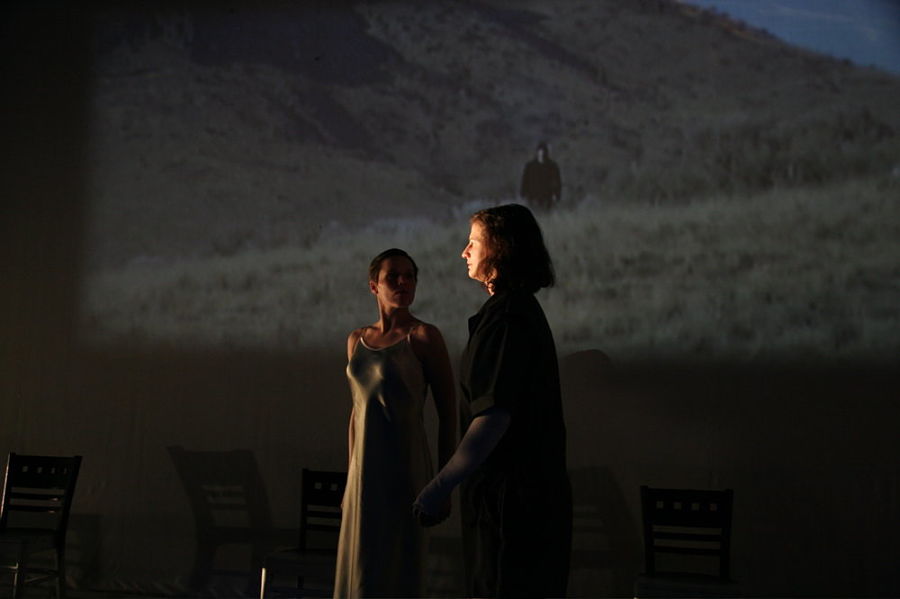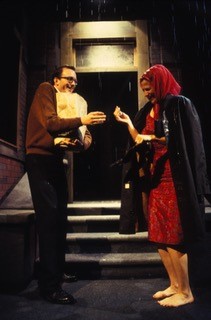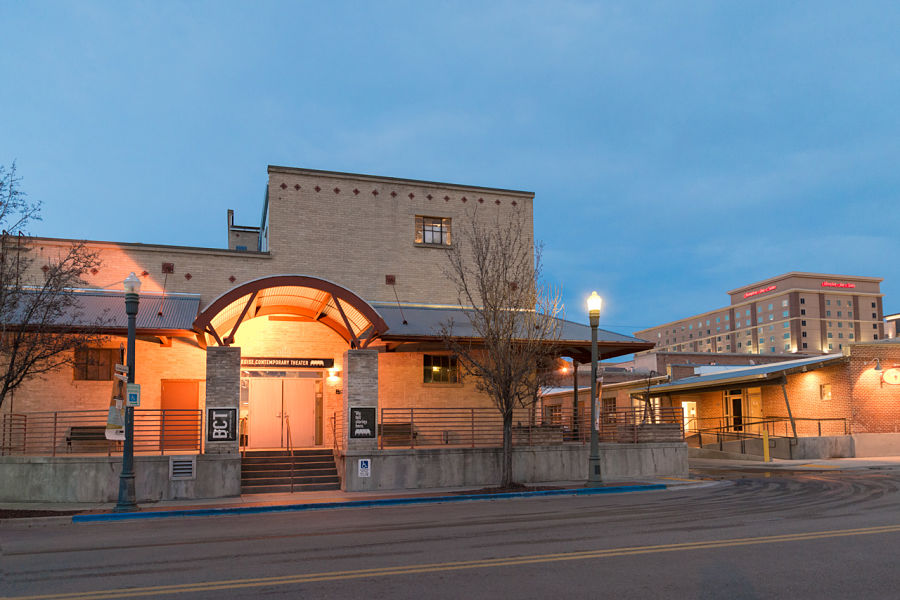BOISE, IDAHO: “We tell stories here,” is the motto of Boise Contemporary Theater, a small, 21-year-old company located in the arts-friendly downtown of this Gem State capital, between the Boise Art Museum and Freak Alley Gallery, between a 4-screen art house cinema and Treefort Music Fest. An incubator of fresh work as well as a producer of new work from elsewhere, BCT has staked out a strong identity in a city and a state that are culturally underrated, though in this case not under-served. We communicated by email with founding artistic director Matthew Cameron Clark about the theatre he made and what keeps it going.

Who founded Boise Contemporary Theater, when, and why?
I was born and raised in Boise. Then, after graduating from Whitman College and living in Seattle for a couple of years, I moved back home in ’96 with dreams of starting a theatre company. There was (and still is) a well-established Shakespeare festival here run by Charlie Fee. Bart Sher was directing Shakespeare here regularly, doing really compelling work. There was also a great professional theatre for young audiences, which has since merged with the Idaho Shakespeare Festival. There were some cool fringe companies staging original work, but there was no one consistently producing professional contemporary theatre in Boise. I saw a need in this little city that I love.
In the fall of ’96 I began producing shows independently in various spaces: basements, bars, and vacant storefronts. In April of ’97 I directed the first show under the Boise Contemporary Theater name, a production of Danny and the Deep Blue Sea. I was taking cash advances from a personal credit card to pay actors because it was important to me to pay artists and for BCT be called a professional company. In ’99 we incorporated as a nonprofit, found our permanent home, and launched a major capital campaign. We turned an old seed warehouse, built in the ’30s, into a working theatre, and have been staging plays here since the fall of 2000.
What sets your theatre apart from others in your region?
In addition to producing contemporary plays that have already had success in other places, BCT is the only professional company within 300 miles committed to premiering new work. Each season we assemble a team of exceptional local artists and visiting artists from across the country, building on longstanding relationships, while always adding new perspectives and expertise. We also perform in a remarkably intimate space. There are more than 200 seats here, but you’re never more than nine rows from the action.

Who is your audience?
As a native Idahoan who has travelled a fair amount, I am well aware of the misconceptions many people can have about this place. The audience that BCT has built over the past 22 years is made up of open-minded and open-hearted people who are up for an adventure. They are willing to be challenged and surprised, while also being engaged and entertained. Our subscriber base has grown to almost 2,000 people, which is extraordinary for any theatre company our size, but especially when you consider the kinds of plays we are staging, including 18 world premieres in the last eight seasons.
Tell us about your favorite theatre institution other than your own, and why you admire it.
I have a big institutional crush on Signature Theatre in New York. What Jim Houghton was able to create there is inspiring on a number of levels. The commitment to supporting playwrights through various residencies, the efforts to keep tickets affordable, and that space! The Pershing Square Signature Center is a really special place, where people gather not just to make and see shows, but to have meaningful conversations about them. Jim’s legacy reaches all the way across the country, inspiring me, and the future of BCT.
How do you pick the plays you put on your stage?
At the core of that process is a desire to create diverse and meaningful experiences for our audience. We actually just went through a mission statement revision process, and it was exciting to select the upcoming season with the new touchstone: “Boise Contemporary Theater inspires our community to examine our perspectives and better understand ourselves, each other, and the world around us by creating thought-provoking stories of the human experience.”

I’m also a big advocate for putting female protagonists onstage, especially women of color. I have been able to do that more and more in recent seasons and will continue to make it a priority. I work very closely with Dwayne Blackaller and Tracy Sunderland during the season selection process. We have known each other for more than 20 years, and as our tastes have evolved, it’s been exciting to see the places where they overlap and complement the ongoing conversation we’re having with our community. At the end of the day I want the stories we tell to get a hold of people, and to start meaningful conversations.
Tell us about your education and engagement programming.
My associate artistic director, Dwayne Blackaller, joined the BCT staff in 2011. One of his primary responsibilities was to create an education program that aligned with our core programming. The result is one of my favorite things in the world. BCT Theater Lab is designed to take young artists deep into the art and craft of storytelling. Small teams create brand new plays over a 10-week period and present their work for the public on the mainstage. Dwayne teaches young artists how to turn their big questions and observations into something that can be shared with their community. It’s a deeply collaborative process without censorship. Watching those kids rise to the challenge of making theatre together is as inspiring as anything I’ve ever seen onstage.
What’s your annual budget, and how many artists do you employ each season?
We are just shy of the million-dollar mark for the current fiscal year. We will employ 24 actors in the mainstage season, along with more than 50 designers, directors, technicians, and craftspeople. One of my favorite responsibilities is the selection of the teams for each production. I’m a playwright, actor, director, and producer, but I think my most important skill as the artistic director of BCT is that I have good taste in people. Making great theatre requires a lot from the production team, including innovation, collaboration, trust, and inspiration. Successful growth for BCT isn’t just about having more money to spend on each production. It’s about striving to make the next thing we do our best work yet, learning from our failures, and not just trying to replicate our successes. We are always working to imagine something new.

What show are you working on now? Anything else in your season that you’re especially looking forward to?
Director Tracy Sunderland and I are working on casting our season opener, The Curious Incident of the Dog in the Night-Time. With 10 actors it’s a big show for us, an exciting challenge. I can’t wait to see what Tracy’s vision brings to that play. She’s brilliant. Also…Dwayne and I are working on our newest show, Rabbit/Moon. It’s the fourth play we have written together, and our most ambitious. It combines elements of science fiction, ancient fairy tales, dance theatre, hip-hop, the nature of sound as touch, and the fact that love changes the way we see the world. It will premiere here in April.
Strangest or funniest thing you’ve ever seen (or put) on your stage?
A six-foot whale penis for Narwhal! Unicorn of the Sea. I have never heard an audience laugh that hard. They were screaming.
What are you doing when you’re not doing theatre?
I have two kids who are both creative, extraordinary people that keep my life exciting and unpredictable. Spending time in the mountains of Idaho is a big factor in my quality of life. There are natural hot springs all over this state that make great destinations any time of year. I go backpacking in the Sawtooth Mountains at least once a summer. And I love to travel whenever my schedule and budget allow it.
What does theatre—not just your theatre, but the American or world theatre—look like in, say, 20 years?
I believe theatre will continue to evolve in a number of directions, from the grand to the intimate. There will always be a human need to gather and experience a story together. I have great hope that the trend to actively include more diversity will continue and that the theatre will always be a place where we can go to better understand ourselves and each other. As we change so will our art and the definition of theater will continue to expand.


